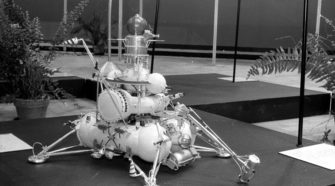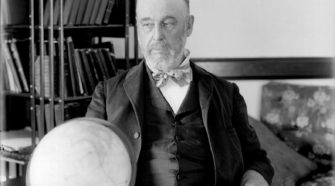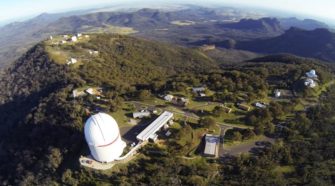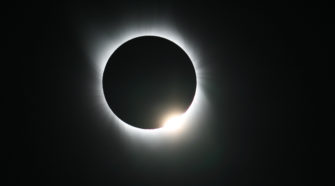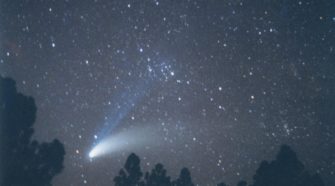History
This Week in History: August 23-29
AUGUST 23, 1862: The comet now known as Comet 109P/Swift-Tuttle passes through perihelion at a heliocentric distance of 0.963 AU. The comet had been discovered the previous month independently by Lewis Swift and Horace Tuttle, and became a conspicuous naked-eye object. It is the parent comet of the Perseid meteor shower and is a future …
This Week in History: August 16-22
AUGUST 16, 1898: DeLisle Stewart at Harvard College Observatory’s Boyden Station in Arequipa, Peru, takes photographs on which Saturn’s outer moon Phoebe is discovered, although the images of Phoebe were not noticed until the following March by William Pickering. Phoebe was the first planetary moon to be discovered via photography, and it and other small …
This Week in History: August 9-15
AUGUST 9, 1996: The NEAT program based in Hawaii discovers an apparent asteroid, designated 1996 PW, that is found to be traveling in a near-parabolic comet-like orbit with an approximate orbital period of 5600 years. 1996 PW was the first known long-period “Damocloid,” and these objects are discussed in a future “Special Topics” presentation. AUGUST …
This Week in History: August 2-8
AUGUST 3, 1963: U.S. Government sensors detect an airburst explosion near the Prince Edward Islands off the southern coast of South Africa. At first it was thought that this was caused by a clandestine nuclear device tested by that nation, but later study revealed that it was caused by an incoming small stony asteroid. Airburst …
This Week in History: July 26-August 1
JULY 28, 2014: The Pan-STARRS program in Hawaii discovers the centaur designated as 2014 OG392; it has an orbital period of 42.8 years and will pass perihelion in November 2021 at a heliocentric distance of 10.0 AU. An observational analysis published earlier this year indicates sustained cometary activity, however, this report was published too late …
This Week in History: July 19-25
JULY 19, 2009: An unknown object, most likely an asteroid a few hundred meters across, impacts Jupiter, leaving a black “scar” in Jupiter’s atmosphere that persists for the next one to two weeks; the “scar” was first noticed by amateur astronomer Anthony Wesley in New South Wales. The “scar” was reminiscent of those produced by …


